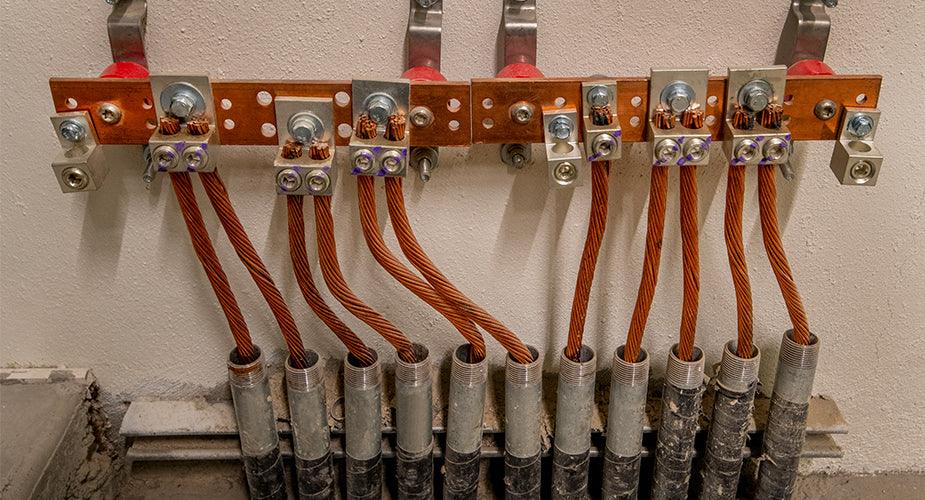Knowing how to read an electric meter is essential, especially if you want to gain control of your household’s energy consumption and expenses. By understanding how your meter is read, you can closely track your electricity usage, spot unusual spikes or drops in consumption, and more importantly, verify the accuracy of your utility bills. With this knowledge, you can also make informed decisions about energy-saving practices and investments in renewable energy solutions, such as solar panels and solar generators.
In this article, we will cover the different types of electric meters, guide you through the process of the correct way of how do you read an electric meter, as well as an efficient solution to lower your electric bills.
What is an electric meter?
Before we go through the process of how to read an energy meter, let us first quickly explain what an electric meter is. An electric meter is an essential device that measures that amount of electrical energy that is consumed by a household or a building. Typically, it is installed by the local utility company and it plays a critical role in monitoring your household’s usage and ensuring accurate billing.
What are the types of electric meters?
There are four primary types of electric meters which are analog meters, digital meters, smart meters, and time-of-use (TOU) meters.
-
Analog Meters, it is feature a series of rotating dials to display the amount of electricity used. These traditional meters have been used for decades but are gradually being replaced by modern versions. Understanding how do you read an electric meter is essential for tracking your energy consumption accurately.
- Digital Meters provide a more convenient reading that analog meters. These type of modern meters have an electronic display showing the amound of electric consumption. Digital meters are easier to read and are often more accurant than their analog counterparts.
-
Smart Meters Smart meters are advanced digital devices that provide real-time electricity usage data. They remotely communicate with your utility company, eliminating manual readings. With smart meters, you gain detailed insights into your energy consumption patterns, helping you better manage electricity usage. Learn how to read electric meter data to optimize energy efficiency.
- Time-of-use Meters, from its name, are designed to record electricity usage during various times of the day. These meters charge different rates depending on the time of use, which can help homeowners to use electricity during off-peak hours when rates are lower. TOU meters are particularly useful for individuals who are looking to save money by shifting their energy consumptions to less expensive times.

How do you read an analog and digital electric meter?
The correct on how to read an energy meter depends on the type of meter you have installed in your home, here we provided a step-by-step guide for each type:
Reading an Analog Electric Meter
-
Analog meters typically feature four to five dials, each representing a digit in the reading. To learn how to read electric meter, start from the leftmost dial and move to the right. The largest digit is on the left, and the smallest is on the right. Understanding this can help you monitor your electricity consumption effectively.
- You will notice that each dial on the electric meter alternates between clockwise and counterclockwise. Some meters will have arrows on top of the dial pointing the direction it turns.
- If the dail is in between two numbers, write the lower number. For example, if the hand is between 5 and 6, write down 5. However, take note of how the dial turns (whether its clockwise or counter clockwise) to record the correct number.
- Also remember that on the dial that turns clockwise, the 0 represents 10, so if a hand is between 9 and 0, you have to round down to 9.
- Round down if the hand is exactly on a number and the dial to the right is 0. However, if the pointer is directly on a number and the dial to the right is not 0, then take note the number that the hand is pointing at.
- Write down the numbers as you go based on the sequence. With these numbers, you will identify the energy consumption of your home.
Remember that these numbers are in kilowatt-hours, so if you wrote 14155, this means that at this point, your home has consumed 14,155 kWh. The difference between the reading from the previous month to the present is the amount of electricity that you consumed for this month.
How Do You Read an Electric Meter? (Digital Electric Meter)
- Reading electric meters are far more easier than reading their analog counterparts. You only have to simple write down the numbers by reading it from left to right.
- The process of reading rotary meters, which are technically analog, is the same–you just read the numbers from left to right.
- There may be meters with decimal numbers, but you don’t have to take note of these as these numbers are insignificant in your bill.
Reducing Your Home’s Electric Bill
With energy costs continuously increasing, it makes sense for homeowners, such as yourself, to be more aware about their electric consumption. One way to do this is learning how to read their electric meters. However, if you are looking for a more efficiency way to reduce your electric bill, you can consider investing in solar generators and panels for your home.
Although it is true that there are upfront costs in getting a whole house solar system, utilising solar energy for your home is a more cost-effective and sustainable solution.
Financial Benefits of Solar Energy
-
Lower electricity bills: While, in most cases, you will still receive a bill from local utility provider, installing solar panels can immediately reduce your electric bills. This is because when you generate your own electricity, you become less reliant on the grid, which obviously translates to lower monthly bills. Related article: How do solar panels work with your electric bill?
-
Tax incentives and rebates: The federal government and many states provide tax incentives and rebates for solar energy use. These initiatives, like the Federal Solar Tax Credit, help reduce the cost of installation and encourage renewable energy adoption. While solar power can help offset energy costs, understanding your energy usage is still essential. Learning how to read electric meter ensures you can track consumption accurately and maximize your solar system's benefits.
.
- Increased property value: On top of the rebates and incentives, properties with solar panels have an increased value, which makes solar energy system a sound investment if you’re planning to sell your home in the future.
Want to learn more about solar generators and their impact on your electricity consumption and bill? Understanding how to read electric meter is key to monitoring usage. For personalized assistance, reach out to our support team at Nature’s Generator and they will be happy to attend to your questions.
* We want to give credit where credit is due. Professional writer, Ishna Sablaya, contributed research and content to this blog titled: How to Read Electric Meter Thank you, Ishna, for your contributions!








 10,000W LIFEPO4
10,000W LIFEPO4






